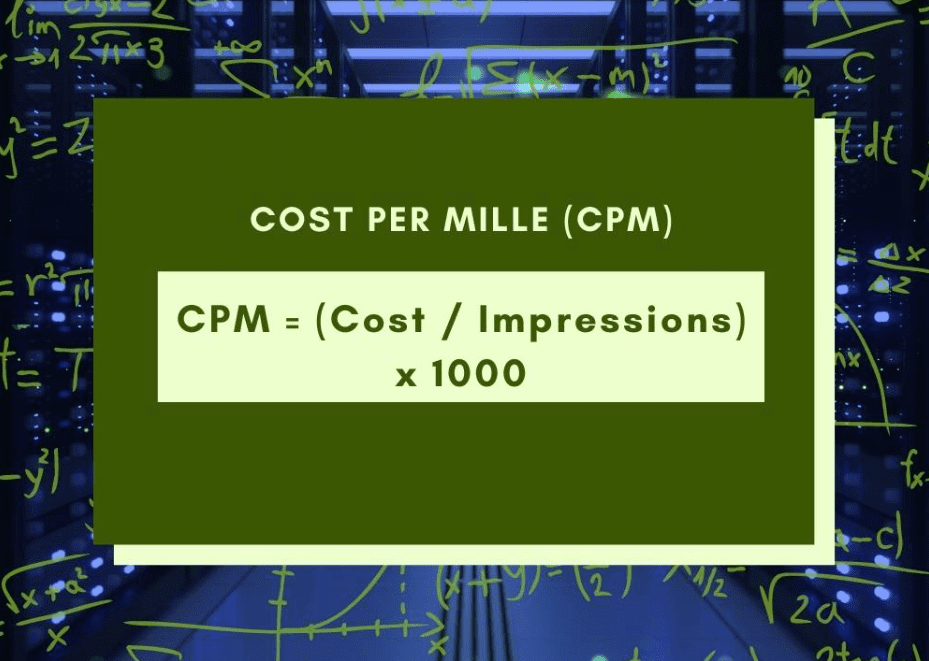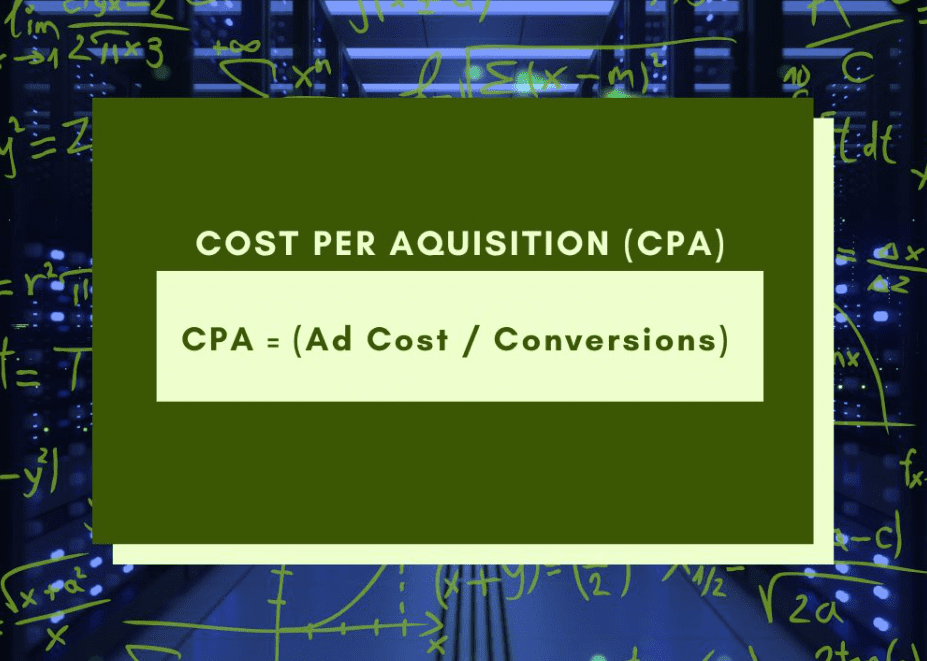When it comes to digital advertising, CPM is one of the most important metrics that you need to understand. CPM, which stands for “cost per mille,” is a metric used to measure the cost of an advertisement relative to the number of impressions it receives.
In this article, we will explain what CPM is and how you can use it to get better results with your digital marketing efforts.
What is CPM?
CPM, or cost-per-mille, is a pricing model used in digital advertising.
Under this model, advertisers pay a set price for every thousand impressions their ad receives.
The formula to find CPM is as follows:

CPM = (Cost / Impressions) x 1000
CPM is often used as a metric to measure the effectiveness and value of an ad campaign, as it provides a clear indication of how much exposure an ad is getting.
However, it should be noted that CPM does not take into account the quality of the impressions, only the quantity.
As such, it is possible for an ad to have a high CPM but low conversion rates.
Therefore, CPM is clearly a good measure for brand awareness campaigns that only focus on reach.
In addition, when coupled with conversion data, CPM can also be used to measure the effectiveness of conversion campaigns.
Why Digital Marketers Need to Know About CPM
CPM is a standard used by advertisers and media buyers across the digital marketing industry.
Whether you’re a publisher trying to sell ad space on your channel or an advertiser buying digital ads, you should always keep CPM in mind.
Average CPMs will vary depending on where and how ads appear to audiences.
Here are some of the main factors that play into CPM rates:
- geographic location
- platform
- device type
- competition
- industry
- ad format
For example, the average CPM for Facebook ads in the telecommunications industry is $1.39. Whereas, Youtube ads have an average CPM of $20.
By understanding CPM in your specific area of business, you can make strategic decisions, play to your strengths, and ultimately get the most value out of your advertising efforts.
How to Use CPM to Run a Successful Digital Advertising Campaign
Goal setting and measurement are key to running a successful digital ad campaign.
If you try to place ads randomly with no way of measuring success, you might as well take your ad spend and flush it down the toilet.
Instead, use CPM as a standard metric to make decisions about how to best spend your advertising budget.
How to Set a CPM Benchmark
To set a CPM benchmark, you want to use your existing marketing data and industry information to find out what CPM is good for your business.
Use this 4-step process to set a CPM benchmark:
Step 1 – Set a Campaign goal
The first step in using CPM effectively is to set a campaign goal to either build brand awareness or convert paying customers.
CPM works best for measuring brand awareness campaigns, but it can also be used for conversion campaigns.
Brand awareness campaigns are what you’d consider top-of-funnel.
Larger companies often use this tactic to get the word out about their brand.
These types of campaigns typically target wide demographics and share information on broad topics.
Brand awareness campaigns aren’t necessarily aimed at converting, so you’ll find it easy to apply CPM as a benchmark for campaign effectiveness.
In this scenario, you’ll find that the most successful campaigns will deliver lower CPM and higher impression volumes.
You can also use CPM to measure the effectiveness of conversion campaigns.
An increase in impressions doesn’t necessarily mean you’ll convert more prospects.
No, we have to use a little math to find out how many impressions you will need to earn one conversion.
We can use CPA (cost per acquisition) to find out the effective CPM for your campaign.

CPA (cost per acquisition) = (Ad cost / conversions)
Let’s say you spent $400 on an ad campaign. It had a CPM of $1.50 and you got 12 conversions from it.
CPA = (400 / 12) = $33
Plug the CPA into the CPM formula to get your total number of impressions for 1 conversion.
CPM = 1.50 = (33 / impressions) x 1000 = 22,000 impressions
In this case, we can see that it takes 22,000 impressions to get one conversion.
Therefore, a higher CPM for the same amount of impressions would be a less effective campaign.
We can also reason that a lower CPM for the same amount of impressions would be a better deal.
A little math like this can bake the cost of conversions into your CPM benchmark for conversion campaigns.
This way, you’ll know how far those impressions can take you in advance.
Step 2 – Strategically Launch the Ad Campaign
Once you have a campaign goal, the next step is to gather data by testing a variety of ad creatives.
The goal here is to generate and test different ads with all kinds of different CPMs.
- Maybe some of your ads are on social media
- Perhaps you decide to try some Google Ads
- Try different targeting, formats, and locations all with the end campaign goal in mind
Spread your ads across as many places as you realistically can with your given budget, but make sure to be strategic in your choices.
And of course, always set up conversion tracking so you can compare your results.
Step 3 – Measure Results and Set Benchmarks
After your ads have run for a week or two, take a look at your results.
If you’re running conversion campaigns, look at your CPA and total impressions to set CPM benchmarks for future campaigns (see step 1 for the math on how to do this).
If you’re running brand awareness campaigns, look at the demographic information of each type of ad to see if they are showing up for the right kind of people.
The CPMs for these campaigns can serve as benchmarks for future campaigns.
Once you have an idea of what kind of CPMs you can get for each type of ad, focus on finding and running the best ads possible.
Step 4 – Make Changes and Optimize Ad Campaigns
The last step in the CPM benchmarking process is to use your benchmarks to run better ads.
Whether you choose to improve your initial test ads or try something else, you now have an idea of what to expect in the ad market.
The most common way to improve ads is to A/B test.
This involves running two similar but slightly different ads to see how the changes affect key metrics (in this case, CPM).
As for trying different ad formats, the possibilities are almost endless.
For ideas, check out this article from Wordstream that goes through the most common types of digital ads available.
Summary
CPM is a critical metric for anyone engaged in digital advertising.
It can provide invaluable insights into the effectiveness of your campaigns.
By understanding what CPM is and how to use it, you can benchmark your campaigns against industry standards.
With this information, you can make necessary adjustments to ensure that your ads are reaching the right people and getting the results you want.
Hopefully, this post has illuminated the importance of CPM and provided useful tips on how to capitalize on it for an effective digital advertising strategy.
Happy advertising!
All Images provided by the author under his or her owned license rights.
Disclaimer: The views and opinions stated in this post are that of the author, and Return On Now may or may not agree with any or all of the commentary.
This guest post brought to you courtesy of Return On Now, Professional Austin SEO and PPC Services Company.
Latest posts by Matt Nawrot (see all)
- What Is CPM? The Key to Successful Digital Advertising - November 29, 2022





